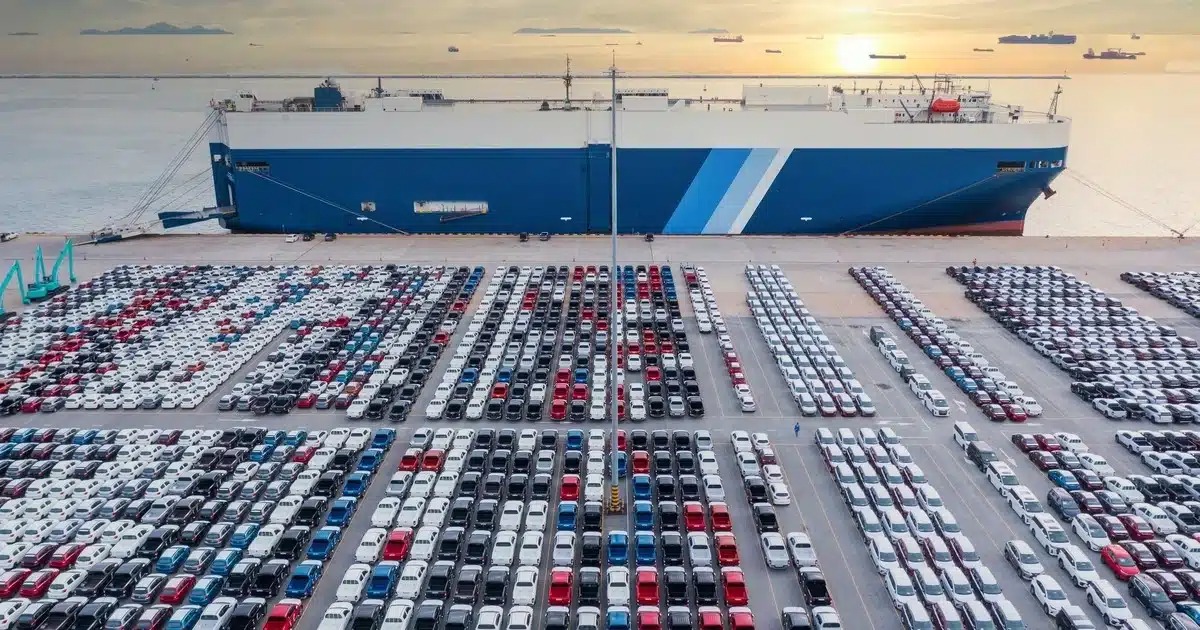Shipping a vehicle overseas or across long distances can be a complex process, but RORO (Roll-On/Roll-Off) shipping offers one of the most efficient and cost-effective solutions. Whether you’re relocating, buying a car from another country, or transporting a fleet, understanding how RORO shipping works can save you time, money, and stress.
In this guide, we’ll explore everything you need to know about RORO shipping—how it works, its benefits, potential drawbacks, and how to prepare your vehicle for a smooth journey.
What Is RORO Shipping?
RORO shipping is a specialized method of transporting vehicles where cars, trucks, and other wheeled machinery are driven directly onto a cargo ship and secured for transit. Unlike container shipping, which requires cranes to load and unload, RORO vessels have built-in ramps, allowing vehicles to roll on and off effortlessly.
This method is commonly used for:
- Personal vehicles being relocated internationally
- Commercial fleets and construction equipment
- Classic and luxury cars needing overseas transport
- Military and government vehicle deployments
Because of its simplicity and efficiency, RORO shipping is often preferred for large-scale vehicle transport.
How Does RORO Shipping Work?
The RORO process is straightforward but requires careful planning. Here’s a step-by-step breakdown:
1. Booking and Documentation
Before shipping, you’ll need to secure a spot on a RORO vessel. This involves submitting necessary documents such as the vehicle title, bill of lading, and customs paperwork (for international shipments). Proper documentation ensures smooth clearance at departure and arrival ports.
2. Vehicle Preparation
To prevent damage and comply with shipping regulations, your vehicle must be prepared before loading. This includes:
- Cleaning the interior and exterior (for inspection purposes)
- Removing personal belongings (most RORO carriers prohibit loose items)
- Ensuring the fuel tank is no more than a quarter full (safety regulation)
- Disabling alarms and securing loose parts
3. Delivery to the Port
You or a transport service will drive the vehicle to the designated port. Some providers offer door-to-port services if you can’t deliver the car yourself.
4. Loading and Securing
Once at the port, the vehicle is inspected, driven onto the ship, and parked in a designated spot. Crew members then secure it with straps or wheel chocks to prevent movement during transit.
5. Ocean Transit
The ship sets sail, and your vehicle remains safely stowed for the duration of the voyage. Depending on the destination, this can take anywhere from a few days to several weeks.
6. Unloading and Customs Clearance
Upon arrival, the vehicle is driven off the ship and processed through customs (for international shipments). You or an authorized agent can then pick it up from the destination port.
Advantages of RORO Shipping
RORO shipping has several benefits that make it a popular choice for vehicle transport:
1. Cost-Effective
Since vehicles are driven directly onto the ship, RORO eliminates the need for cranes or containers, reducing labor and handling costs.
2. Faster Loading and Unloading
The roll-on/roll-off process is much quicker than container shipping, minimizing delays at ports.
3. Ideal for Large Vehicles
RORO ships can accommodate SUVs, trucks, buses, and even heavy machinery that wouldn’t fit in standard containers.
4. Lower Risk of Damage
With no need for lifting or repacking, the risk of scratches, dents, or mishandling is significantly reduced.
5. Environmentally Friendly
Since RORO ships are designed for vehicle transport, they maximize space efficiency, reducing fuel consumption per vehicle compared to other shipping methods.
Potential Drawbacks of RORO Shipping
While RORO is highly efficient, it’s not perfect for every situation. Some limitations include:
1. Exposure to the Elements
Unlike enclosed container shipping, RORO vehicles are stored on open decks, meaning they’re exposed to saltwater, wind, and weather. While modern ships have protective measures, long voyages may still pose risks.
2. Limited Personal Items
Most RORO carriers prohibit personal belongings inside the vehicle due to customs regulations and security concerns. If you need to transport additional items, container shipping may be a better option.
3. Strict Scheduling
RORO ships operate on fixed schedules, so missing a departure can lead to delays and additional storage fees at the port.
4. Not Suitable for Non-Running Vehicles
Since vehicles must be driven on and off the ship, non-operational cars may require alternative shipping methods.
How to Prepare Your Vehicle for RORO Shipping
Proper preparation ensures a smooth shipping process and minimizes risks. Follow these steps before your vehicle is loaded:
1. Thoroughly Clean and Inspect Your Car
A clean car makes it easier to spot pre-existing damage. Take detailed photos from all angles for documentation.
2. Remove All Personal Belongings
Most RORO carriers do not allow personal items left inside the vehicle due to customs and theft risks.
3. Check Fluid Levels and Tire Pressure
Ensure your car is in good working condition—leaking fluids or flat tires can cause problems during transit.
4. Disable the Alarm System
An active alarm can drain the battery or cause disruptions during shipping.
5. Secure Loose Parts
Remove or fasten any loose accessories (spoilers, antennas, etc.) to prevent damage.
6. Keep Only a Small Amount of Fuel
Most RORO carriers require a near-empty tank (usually no more than a quarter full) for safety reasons.
RORO vs. Container Shipping: Which Is Better?
Both RORO and container shipping have their pros and cons. Here’s a quick comparison:
| Factor | RORO Shipping | Container Shipping |
|---|---|---|
| Cost | More affordable | More expensive |
| Loading Speed | Faster | Slower (crane needed) |
| Weather Exposure | Yes (open deck) | No (fully enclosed) |
| Personal Items | Not allowed | Allowed (if packed) |
| Non-Running Cars | Not suitable | Suitable |
If you prioritize cost and efficiency, RORO is the best choice. If you need extra protection or are shipping a non-running vehicle, container shipping may be preferable.
Final Thoughts
RORO shipping is one of the most efficient ways to transport vehicles across long distances or overseas. Its cost-effectiveness, quick loading process, and suitability for various vehicle types make it a top choice for individuals and businesses alike.
By understanding how RORO shipping works, preparing your vehicle correctly, and choosing a reliable provider, you can ensure a seamless and stress-free shipping experience. Whether you’re moving abroad, importing a car, or transporting commercial vehicles, RORO shipping offers a practical and reliable solution.
If you’re considering RORO shipping, start planning early, review all regulations, and work with experienced professionals to make the process as smooth as possible. Your vehicle will be on its way to its destination safely and efficiently.



